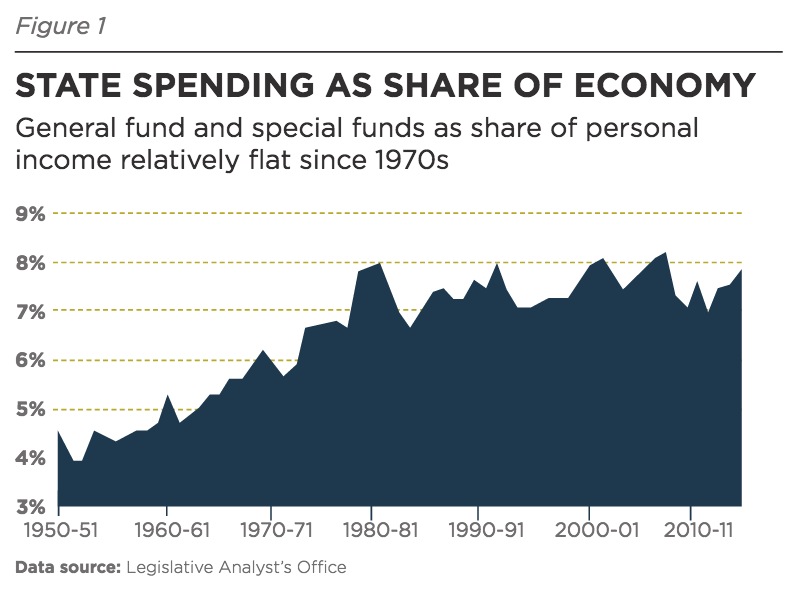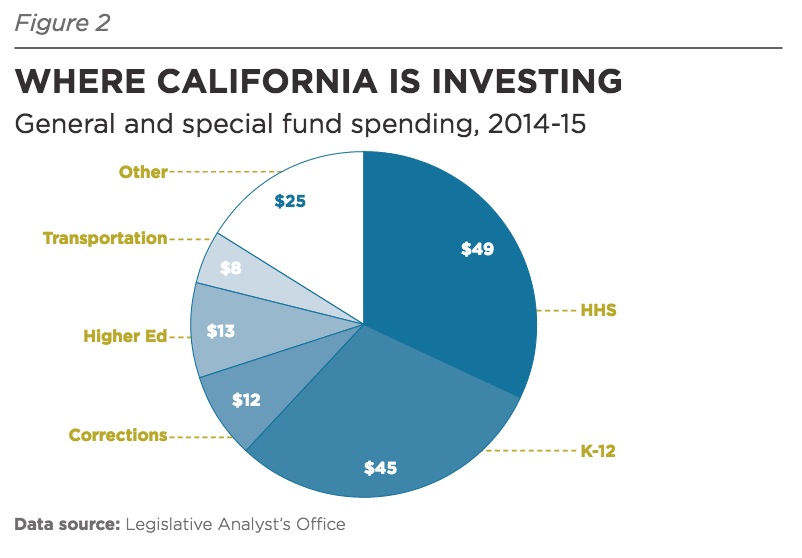CA FWD: CALIFORNIA FORWARD
INTRODUCTION:
A REVENUE CONVERSATION THAT BEGINS WITH THE ENDS IN MIND
 As the economic recovery lifts California out of a decade-long fiscal crisis, ideas are emerging from all quarters about how to build a sturdy foundation for lasting prosperity. Some call for restored funding in programs reeling from years of neglect; some want to improve performance first. For others, it is time to pay down debt, take on looming retirement obligations, and save money for the next recession. Still others are pushing for dramatic changes to the state’s revenue system to avoid repeating the painful booms and busts of the past.
As the economic recovery lifts California out of a decade-long fiscal crisis, ideas are emerging from all quarters about how to build a sturdy foundation for lasting prosperity. Some call for restored funding in programs reeling from years of neglect; some want to improve performance first. For others, it is time to pay down debt, take on looming retirement obligations, and save money for the next recession. Still others are pushing for dramatic changes to the state’s revenue system to avoid repeating the painful booms and busts of the past.
THE TRUTH IS CALIFORNIA MAY NEED TO DO ALL OF THIS—AND MORE
To be successful in the decades to come—and to take full advantage of this unique fiscal opportunity—the state must approach these choices in a new way.
It may be tempting to turn first to finding new sources of funding. But before debating revenue proposals, California’s leaders should consider the problems these dollars are trying to solve, identify funding gaps, and then target public investments—old and new—where they are most needed.
There is no limit to the challenges on the horizon. In the next 30 years, California’s population is expected to grow to 50 million people—the equivalent of adding another city of Los Angeles and San Diego. As income inequality expands, new approaches must be developed to prepare this next generation of Californians to contribute to an ever-changing global economy. With the climate changing, natural resources must be managed more responsibly. Bigger cities need less traffic. Communities need more reliable sources of water. Regions need new avenues to global trade.
California’s long-term prosperity will depend on investments in human capital and infrastructure
SET PRIORITIES FIRST. THEN IDENTIFY REVENUES TO SUPPORT THEM
 California’s government is already spending tens of billions of dollars each year in these areas. To put the state on a path to a stable and equitable fiscal future,the challenge now is to determine how to take on all of these issues—simultaneously. Resources must be directed to the right priorities, money must be used in the most effective way, and additional dollars must be targeted where they can do the most good. For CA Fwd, this is the definition of “sustainability”—when a project or policy is financially, socially, and environmentally balanced over time.
California’s government is already spending tens of billions of dollars each year in these areas. To put the state on a path to a stable and equitable fiscal future,the challenge now is to determine how to take on all of these issues—simultaneously. Resources must be directed to the right priorities, money must be used in the most effective way, and additional dollars must be targeted where they can do the most good. For CA Fwd, this is the definition of “sustainability”—when a project or policy is financially, socially, and environmentally balanced over time.
Financing the Future provides some options for how this can be done, focusing first on two areas essential to the state’s long-term prosperity: California’s human capital—the workforce that must compete in a 21st century economy—and the state’s aging infrastructure, including the transportation systems,water projects, and school facilities needed to support sustainable communities.
This report examines why these priorities must be included in the state’s revenue conversation.It explores how the state funds them now, where additional investments could be made to improve performance, and finally, what some of the options are for building a stable, adequate, and equitable revenue system to support them.
Download full version (PDF): How will California pay for tomorrow?
About CA Fwd
www.cafwd.org
California is in an Era of Reform. But there is much more work to be done – to focus government agencies on improving results, restoring public trust, and making smart investments in education, infrastructure so that all of California’s diverse regions can thrive…CA Fwd is committed to those ends.
Tags: CA, CA Fwd, California, California Forward






 RSS Feed
RSS Feed